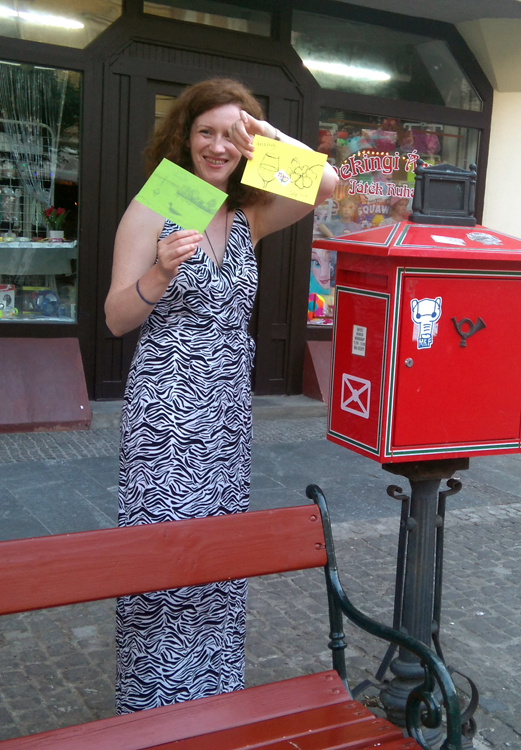People bring back memories from different journeys, some of which are preserved in material objects. To ensure these keepsakes don’t lose their value over time, it would be a good idea to somehow “immortalize” them.

To piece together the scattered “puzzle pieces of memory” into a complete picture of your experiences, there are design techniques you can learn at the workshop “Introduction to MEMORY DESIGN: Sketching Techniques for Creating Travel Books and Mail Art.” As a result, everyone will have the opportunity to create their own handcrafted travel stories and receive exclusive messages by mail from themselves and their friends.

In my workshop, I talk about what “memory design” is, share techniques for collecting artifacts and turning them into lasting memories, and reveal secrets of cohesive visual storytelling. I teach how to use “mnemonic keys” and demonstrate design techniques that are useful for creating travel journals and postcards.
As a result of the workshop, each participant will have the opportunity to create their own handmade stories of specific journeys and events—tangibly embodied in travel books and “from you to you” postcards.
Memory design can become more than just objects on your shelf. It can help you vividly and tangibly recall your travels, share your experiences with friends, and create illustrations for social media posts—or even for real, printed books.



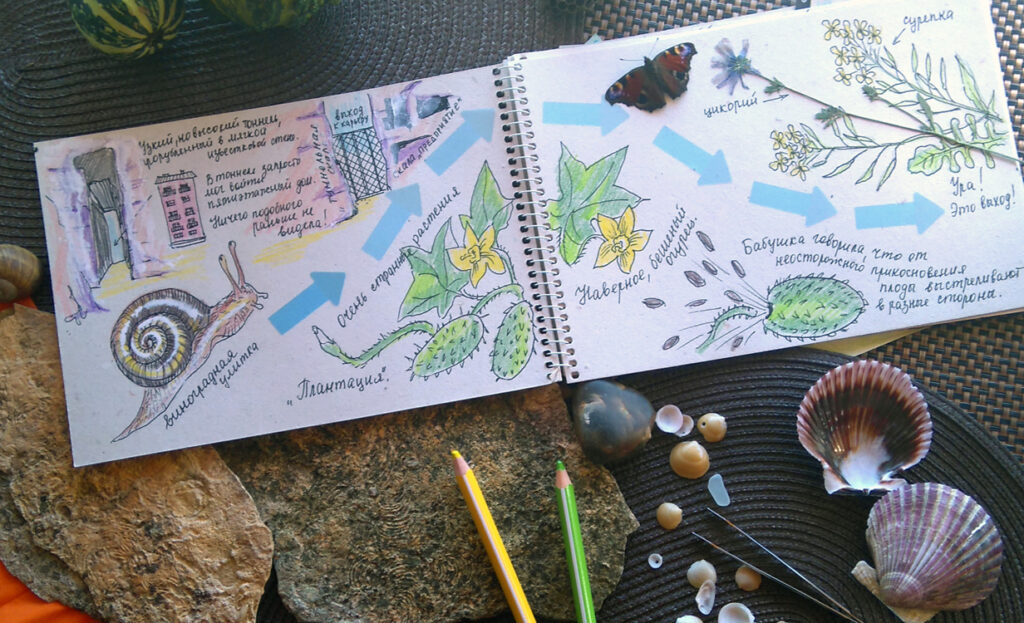
Иллюстрации к книге Е.Соловьевой «Маргарита едет к морю», художник М. Ражева
From the author:
It’s a universal and ancient human trait — to collect things. To take a little piece of something “as a keepsake.” And then you come back from a trip with your pockets full of notes and sketches, candy wrappers, receipts, tickets, maps, and all kinds of brochures. The most meaningful ones, of course, you’ll recognize even years later — but the rest… who knows? You might just throw them away later, with or without regret. Or you’ll keep them, because you brought them back for a reason… Plus, there are gigabytes of photos and videos.
Sure, you could limit yourself right from the start — “don’t collect junk.”
But aren’t we impoverishing our memories that way?
… And then someone might ask: “How much was the museum entrance?” or “Did transport cost a lot?” or “..?” And there you are — with a café receipt, a photo of the meal, a sketch of a floating bus, and the ticket for it. Or just a note: “Today I walked along the black pine alley.”
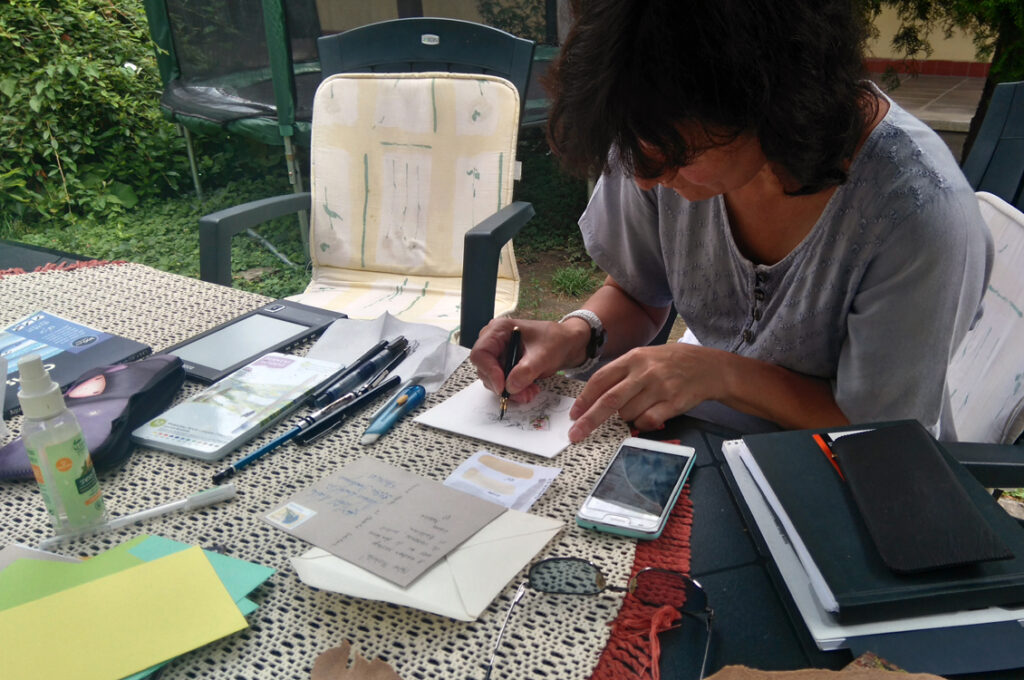
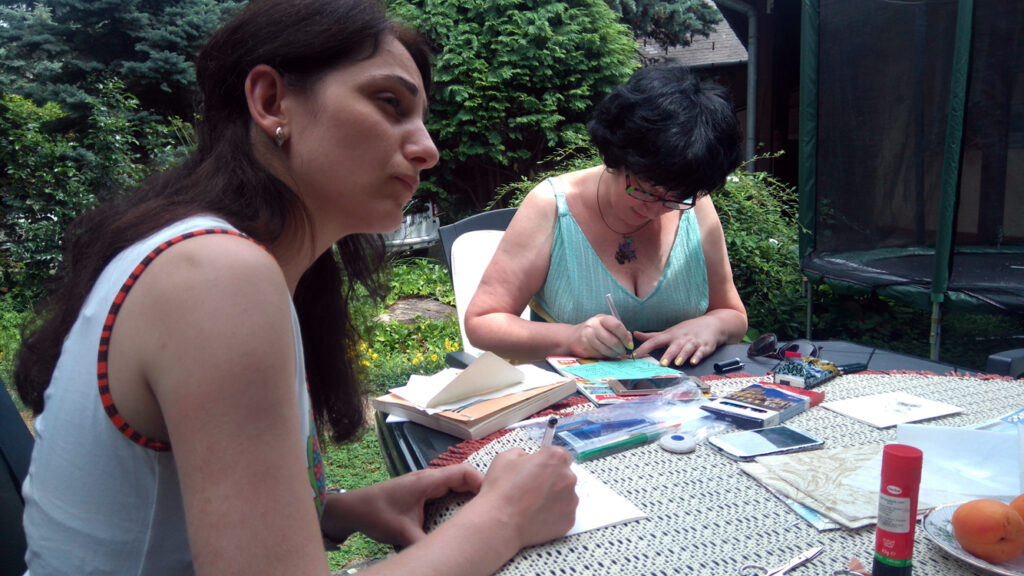
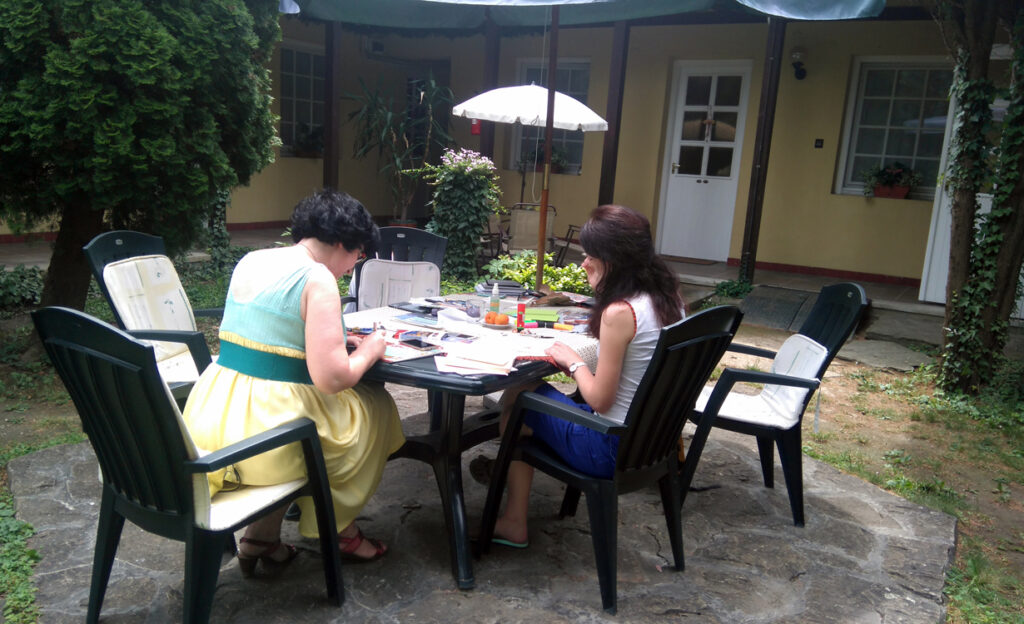


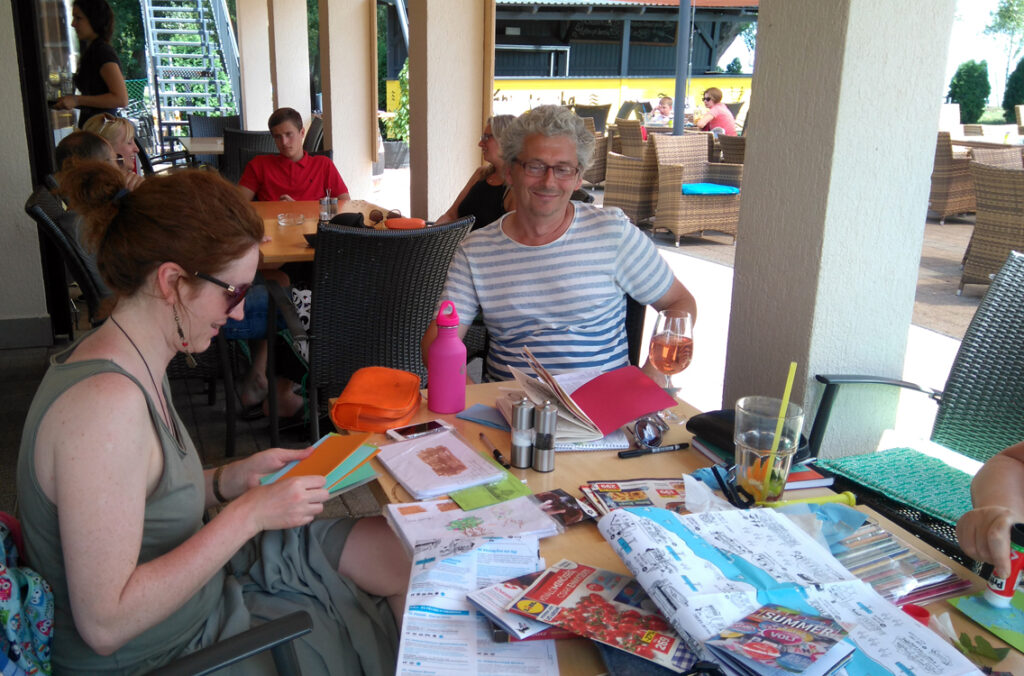
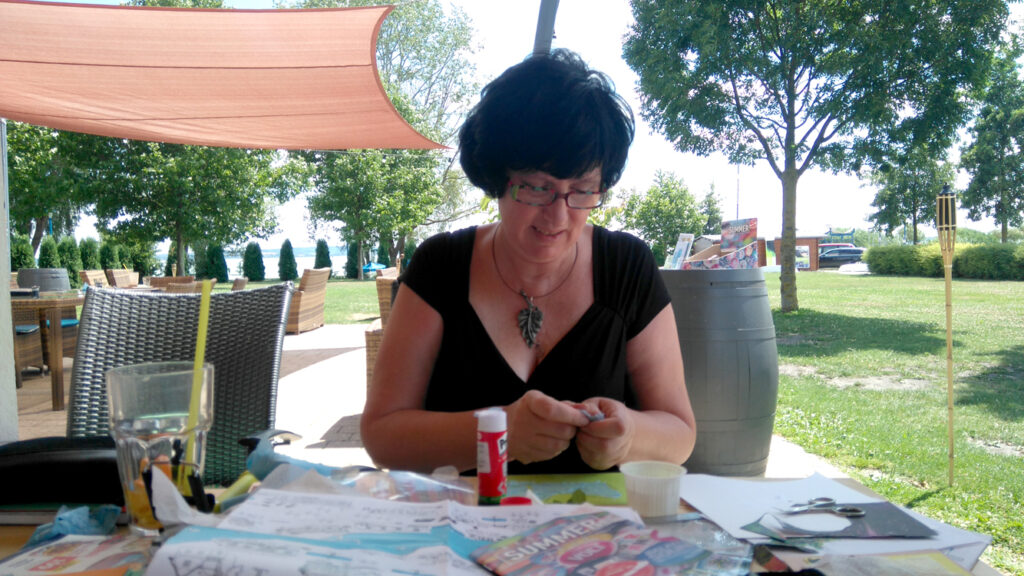
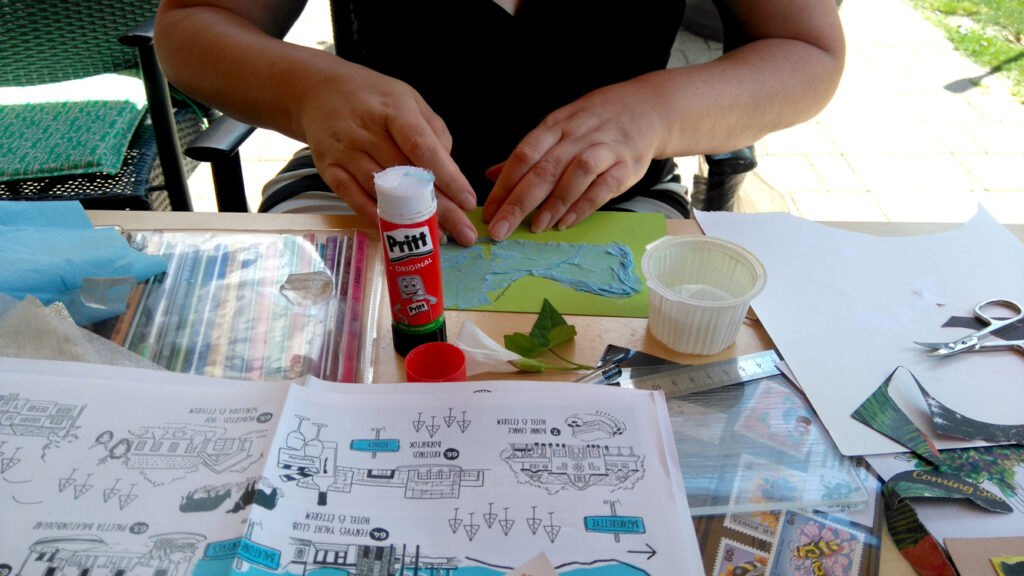
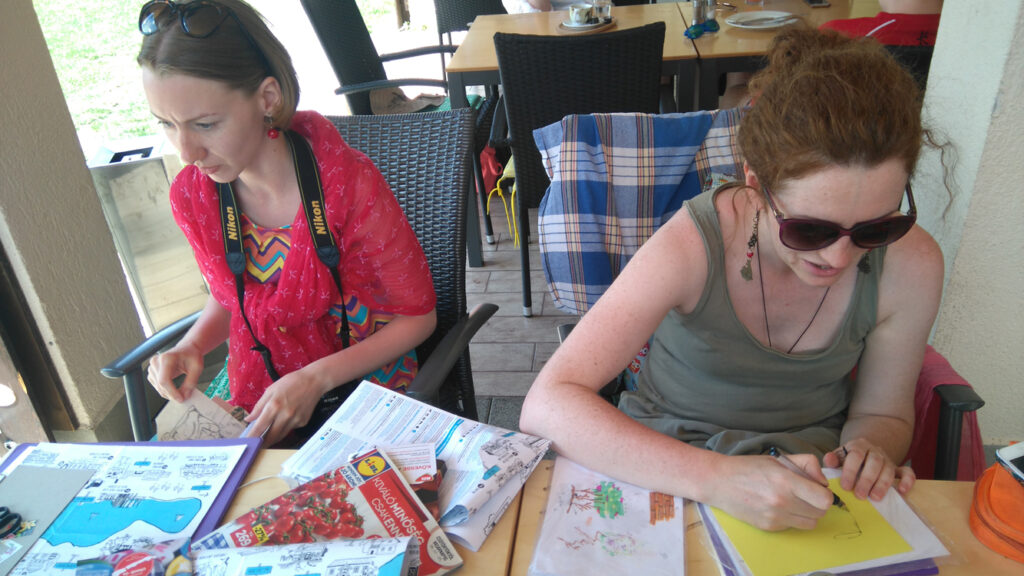
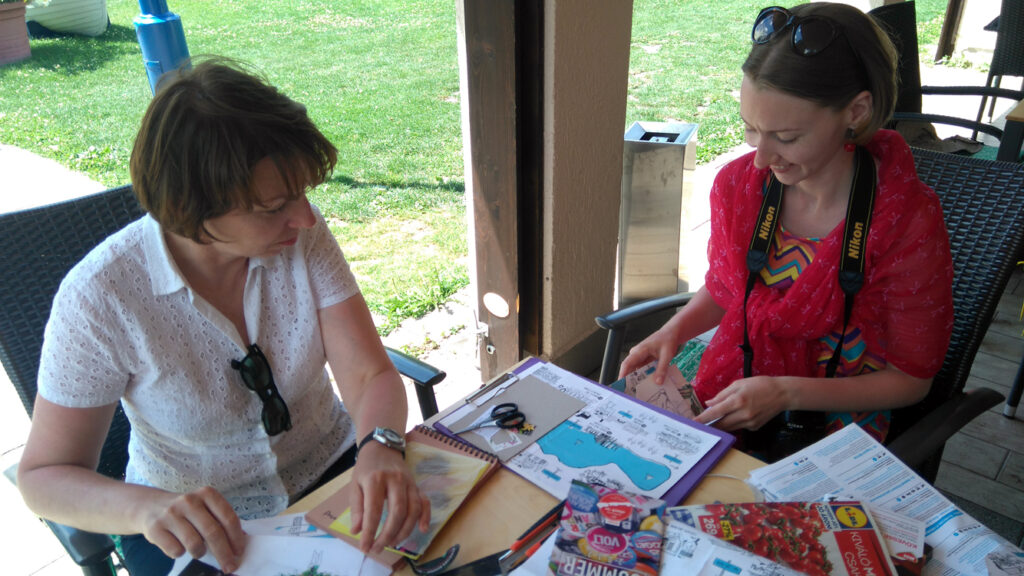
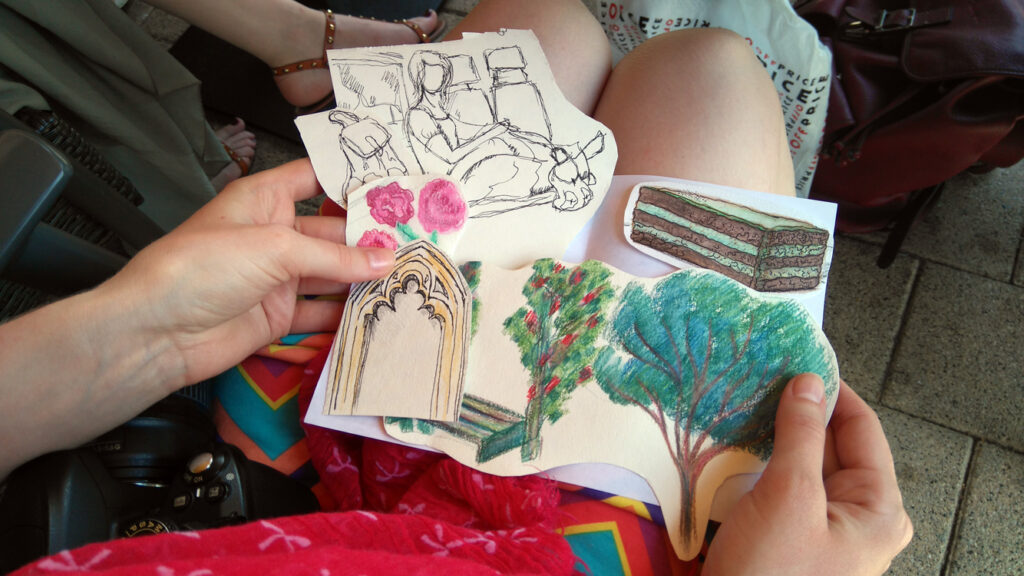
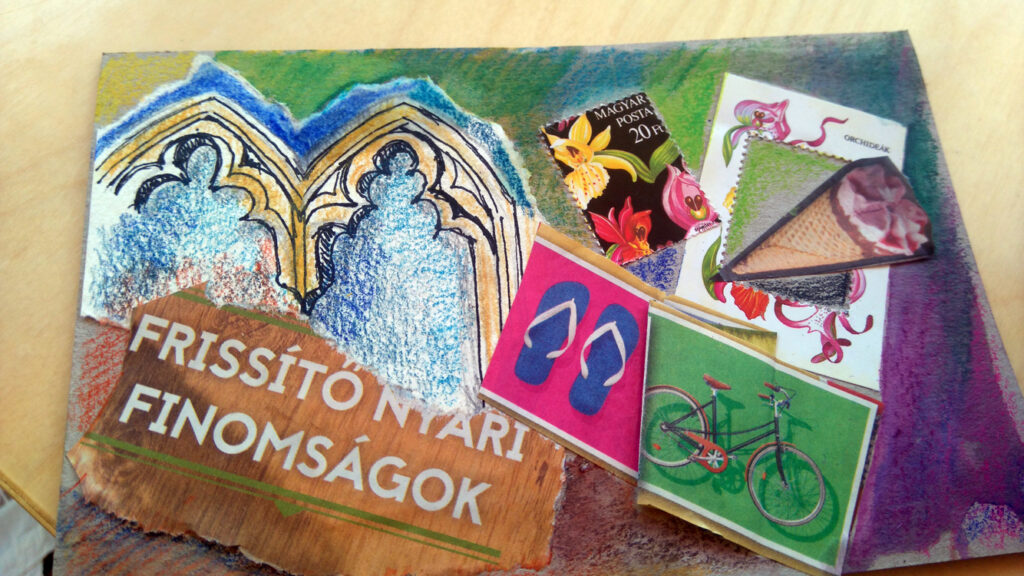
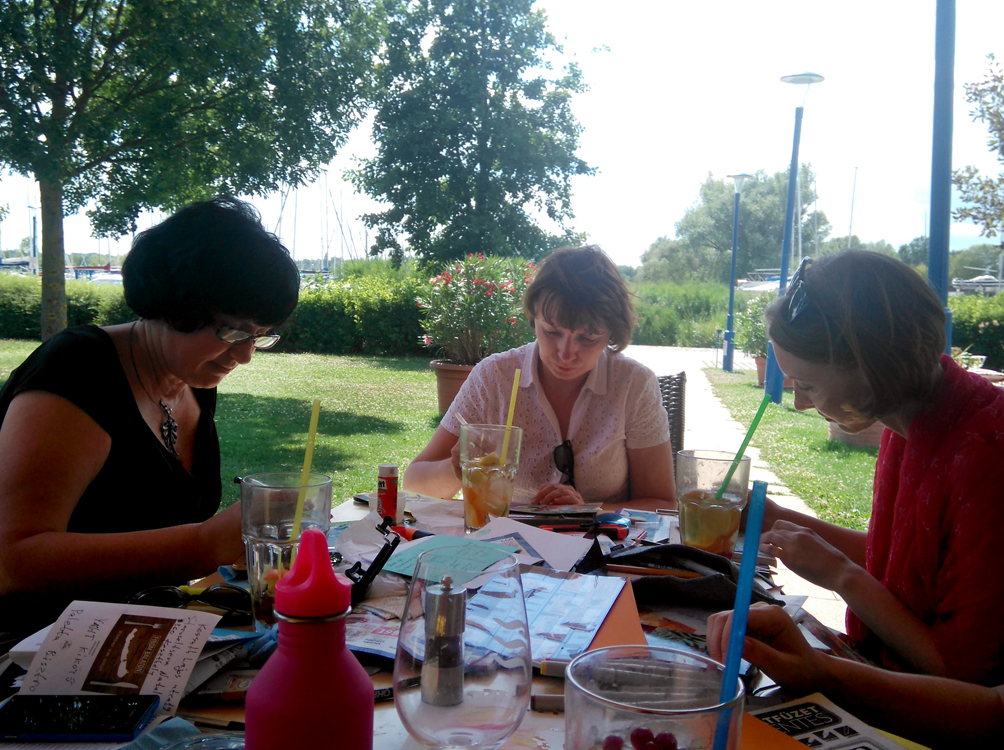


The workshop was held twice in the summer of 2017 in Keszthely, Hungary, for participants of the sketching course at Lake Balaton (organized by Natalia Staroseltseva and Konstantin Kashin).


